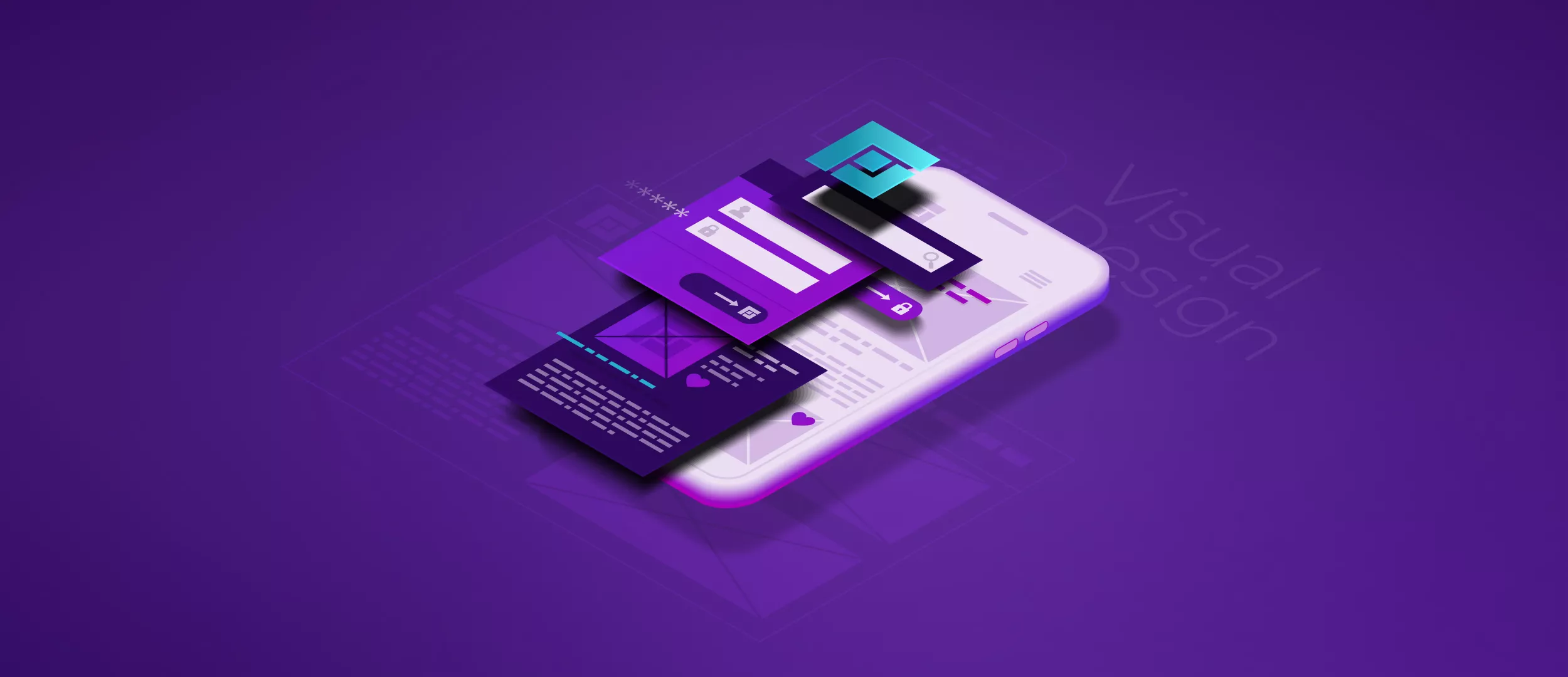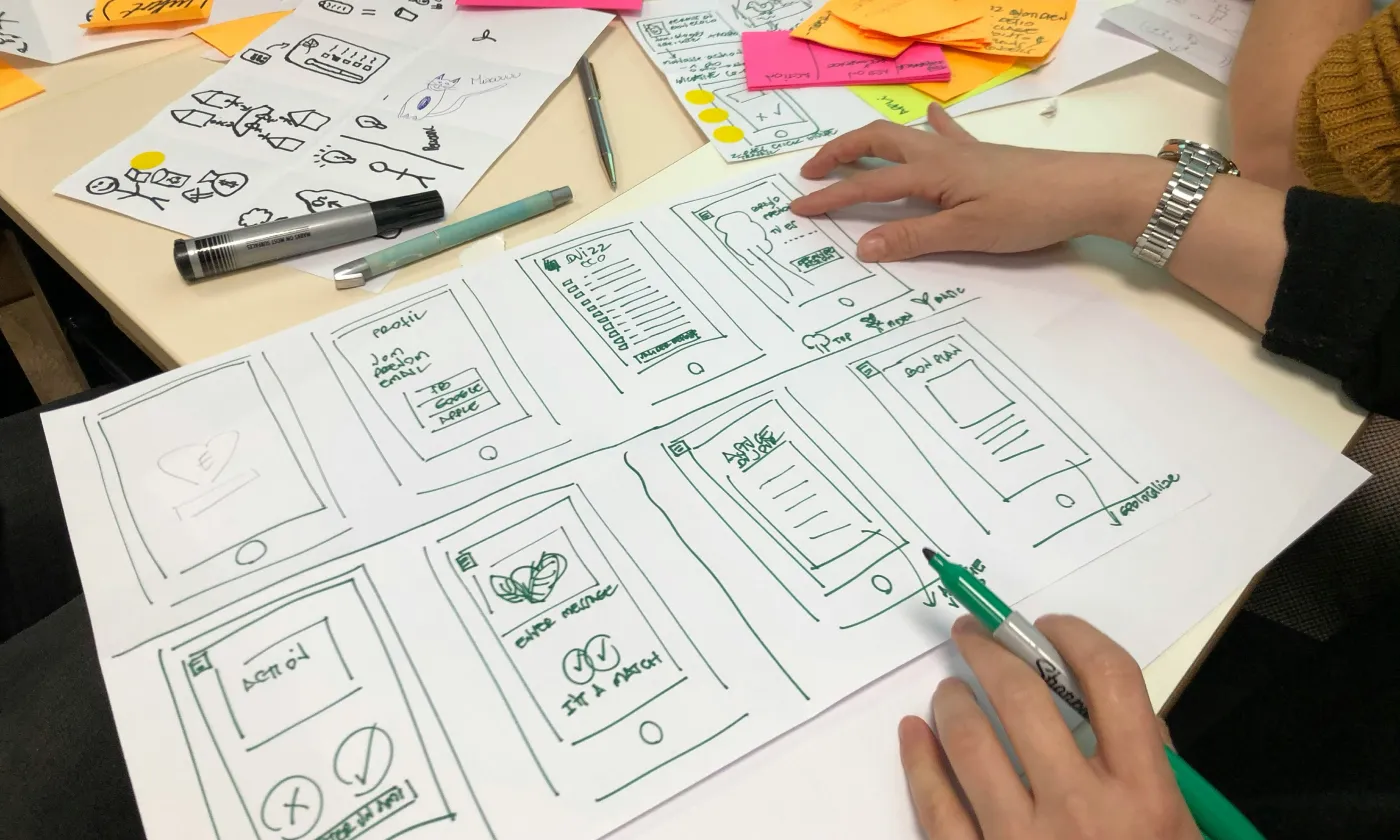
Visual design plays a crucial role in branding as it serves as the primary way for brands to communicate their identity and values to their target audience. Effective visual design elements, such as logos, color schemes, typography, and imagery, can help establish a strong brand identity and make it easier for consumers to recognize and remember the brand.
The impact of visual design on consumer perception and brand recognition can't be overstated. When done well, it can create a positive first impression, convey trustworthiness and credibility, and differentiate a brand from its competitors. On the other hand, poor visual design can turn off potential customers and damage a brand's reputation.
In addition to establishing a brand identity and aiding in recognition, visual design can also help create an emotional connection with consumers. A visually appealing design can evoke positive feelings and emotions, leading to greater brand loyalty and advocacy.
Establishing Visual Identity
Establishing a visual identity is a crucial step in building a strong brand. A strong visual identity ensures consistency in the visual design and helps to establish brand recognition and differentiation. You may wonder what is visual identity and branding in design, to have a clue, read the blog post below
Want a web app that does more?
Let's build a solution that's smart, sleek, and powerful.
Alina
Client Manager

How to define the visual identity
Visual identity is the visual representation of a brand that communicates its personality, values, and essence to its target audience. It includes all the visual elements that a brand uses consistently across all its communication channels, such as its logo, color palette, typography, imagery, and graphic elements.
Key elements of visual identity
- Logo: A logo is the most recognizable and essential element of a visual identity. It must possess distinctiveness, memorability, and easy recognizability. The logo should reflect the brand's personality and values and be scalable to use across different channels and platforms.
- Color Palette: The color palette is a set of colors that a brand uses consistently in all its visual communication. Colors can evoke emotions, and it's essential to choose colors that align with the brand's personality and values. A well-designed color palette should have primary and secondary colors that complement each other.
- Typography: Typography refers to the font style and size used in a brand's visual communication. It's crucial to select a font that reflects the brand's personality and values and is easily readable across different platforms and devices.
- Imagery: Imagery includes photographs, illustrations, or graphics used in a brand's visual communication. It's essential to choose visuals that align with the brand's personality and values and reflect its target audience's preferences and interests.
How to choose the visual elements to reflect the brand's personality
To choose the right visual elements that reflect the brand's personality and values, brands should follow consistent visual logic in the design:
- Define the brand's personality and values: Before choosing visual elements, it's crucial to have a clear understanding of the brand's personality, values, and target audience.
- Research the competition: Analyze the visual identities of competitors to identify what works and what doesn't work in their visual communication.
- Test and refine: Once the visual elements are selected, it's essential to test them across different channels and platforms to ensure consistency and effectiveness. Refine the visual elements if necessary to align them with the brand's personality and values.
- Monitor and update: A visual identity should evolve with the brand over time. Monitor the visual identity's effectiveness and update it when necessary to reflect the brand's growth and changes.
Creating a Style Guide
A style guide is a document that outlines a brand's visual and written communication guidelines. Its purpose is to provide a set of rules and guidelines that ensure consistency across all brand communication channels. A style guide is important because it helps maintain a consistent visual design, establishes brand recognition, and reinforces the brand's messaging and personality.
Key components of a style guide
- Visual Elements: This includes a brand's logo, color palette, typography, and imagery guidelines. It defines the appropriate usage, placement, and size of these elements in various applications, such as print and digital media.
- Typography: This defines the font families, sizes, and styles that should be used in all brand communication. It provides guidelines for headings, subheadings, body text, and other typographic elements.
- Brand Messaging: This outlines the brand's messaging strategy, including its positioning, key messages, and tone of voice. It helps to maintain consistency in brand messaging across all communication channels.
- Tone of Voice: This defines the brand's personality including its writing style, tone, and vocabulary. It guides the brand's writers and editors in creating consistent messaging across all communication channels.
How to create a comprehensive style guide for a brand
To create a comprehensive style guide for a brand, follow these steps:
- Research the brand's target audience, values, personality, and competitors to establish a strong brand identity.
- Develop guidelines for the brand's logo, color palette, typography, and imagery.
- Define the brand's messaging strategy, including its positioning, key messages, and visual tone in brand design.
- Create a template design for the style guide that reflects the visual brand's identity.
- Organize the content into sections, including visual elements, typography, brand messaging, and tone of voice.
- Add examples and guidelines for each section to demonstrate how the brand's visual and written communication should be used.
- Review the style guide with stakeholders and test it across different communication channels to ensure its effectiveness.
- Regularly update and maintain the style guide as the brand evolves and changes.
A style guide is an essential tool for maintaining consistent visual design and brand messaging. A comprehensive style guide includes guidelines for visual elements, typography, brand messaging, and tone of voice, and can be created through a step-by-step process that reflects the brand's identity and value.
Applying Visual Design Consistently
Consistency in visual design is important because it helps to create a unified and cohesive look and feel across different areas.
7 Tips on How to apply visual design consistently
- Create a document that outlines the visual design elements, such as color palette, typography, layout, and imagery, to be used across different platforms. This guide should be shared with all stakeholders to ensure consistency in design.
- Create templates for different design elements, such as social media posts, email newsletters, and presentations. This ensures that the design elements remain consistent across different areas.
- Choose a color palette and stick to it across all mediums. This creates a sense of unity and helps to build brand recognition.
- Choose a typography that is easy to read and use consistently across all mediums. This ensures that the design is legible and maintains a consistent look and feel.
- Use a grid system to create consistent layouts across different mediums. This ensures that the design is balanced and visually appealing.
- The design must be accessible to all users, including individuals with disabilities. Use color contrast and typography that is easy to read for users with visual impairments.
- Test the design across different mediums to ensure that it remains consistent and visually appealing. Make adjustments as necessary to maintain consistency.
Visual design templates are a great way to ensure consistent design across your projects. By using templates, you can establish a cohesive visual language that reflects your brand or style, and save time by not having to recreate design elements from scratch each time you start a new project.
Case studies that illustrate the impact of consistent visual design
Here are some case studies that illustrate the impact of consistent visual design:
Airbnb
Airbnb's visual design is consistent across all its platforms, including its website, app, and marketing materials. The design features a clean, simple layout with consistent typography, color scheme, and imagery. As a result, Airbnb has become one of the most recognizable and trusted brands in the travel industry.
Apple
The design features a clean, minimalist layout with consistent typography, color scheme, and imagery. As a result, Apple has become one of the most recognizable and successful brands in the technology industry.
Dropbox
The design features a clean, simple layout with consistent typography, color scheme, and imagery. Dropbox has become one of the most successful brands in the cloud storage industry.
Our Experience
Nova Poshta
The design showcases a clean and minimalist layout, featuring consistent typography, color scheme, and imagery. Over the last 16 years, Nova Poshta, a Ukrainian company, has emerged as a leader in delivery services and has driven the industry's growth. The company is committed to developing and improving user-friendly online services.
To enhance the current Personal Dashboard and take the user experience to the next level, Nova Poshta partnered with stfalcon.com. The project involved several tasks, including designing a new Personal Dashboard, custom web application development, and integrating the front end with Nova Poshta's API.
BBGO
Another remarkable solution is BBGO – a car order service. As the product lacked a corporate identity, we took the initiative to design a logo for it. Our primary aim was to feature it as the app icon. Moreover, we ensured that the logo was noticeable and recognizable, considering its future use on car sides and in a checker pattern.
Monitoring and Updating Visual Design
Visual design is an important aspect of any project or product, as it affects how users perceive and interact with it. It is important to monitor and update visual design regularly to ensure that it remains relevant, effective, and aligned with your goals and target audience.
Key indicators of when the visual design needs to be updated
Visual design should be updated regularly to ensure that it remains effective and aligned with your goals and target audience. Here are some key indicators that can signal when the visual design needs to be updated:
- Outdated design: Visual design that looks old or outdated can make your product or brand appear obsolete and unappealing to your target audience. If your design elements haven't been updated in a long time, it may be time to refresh them.
- Low engagement: If you're not seeing the engagement you expect from your target audience, it could be a sign that your visual design isn't resonating with them. Low engagement metrics such as low click-through rates, low conversion rates, or low user retention rates could indicate that it's time to update your visual design.
- User feedback: User feedback can be a valuable source of information about what's working and what's not with your visual design. If you're receiving negative feedback from users or they're having trouble using or understanding your product, it may be time to make some design updates.
- Changes in brand or product strategy: If your brand or product strategy has changed significantly, your visual design may need to be updated to reflect these changes. For example, if you're targeting a new demographic, you may need to update your design elements to appeal to this audience.
- Changes in technology: Advances in technology can also impact the effectiveness of your visual design. For example, if your website needs to be optimized for mobile devices, it may be time to update your design to make it more mobile-friendly.
Tips on how to update the visual design
- Analyze the current design: Before making any updates, it's essential to understand the current design and identify what works well and what needs improvement.
- Consider the audience: The visual design should always be tailored to the target audience. This includes understanding their preferences, needs, and behavior.
- Review the competition: Analyzing the competition can provide valuable insights into design trends, common practices, and potential opportunities for improvement.
- Define the objectives: Clearly define the goals and objectives of the visual design update. This can include improving user experience, increasing engagement, or aligning with brand values.
- Create a style guide: A style guide can help ensure consistency in visual design elements such as typography, colors, imagery, and layout.
- Use white space effectively: White space can make a design look more modern and professional and can help draw attention to important elements.
- Focus on typography: Typography is a critical element in visual design. Choose fonts that are easy to read and align with the brand's voice and values.
- Incorporate new design trends: Keeping up with design trends can make a design look fresh and modern. However, be careful not to sacrifice functionality for the sake of trends.
- Test and iterate: After updating the design, it's essential to test it with users and gather feedback. Based on the feedback, iterate and make further improvements.
Final Thoughts
Customers are more likely to remember and recognize a brand that consistently uses the same colors, fonts, and overall design across all marketing materials. The consistent visual design also builds trust. When a brand is consistent in its visual representation, it appears more professional and trustworthy, which can help establish customer loyalty and increase customer retention. Сreating a consistent visual design also can save time and money in the long run.
Stfalcon can help you create a consistent visual design for your brand by defining design guidelines, designing UI/UX elements, creating a solid brand identity, and designing your website or mobile app. We can make the user interface and user experience of your website or mobile app to ensure consistency with your brand's visual identity.
If you are interested, just contact us, free consultation is available.

 Read the full case study
Read the full case study
 Read the full case study
Read the full case study


